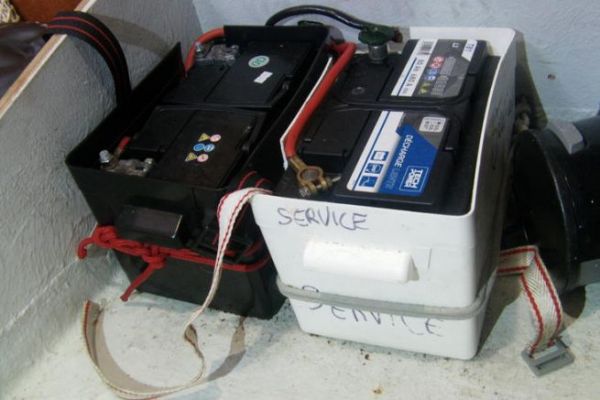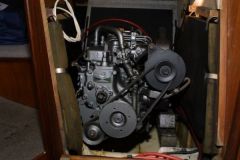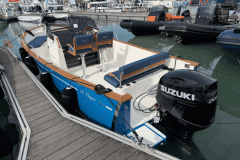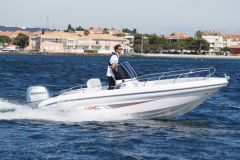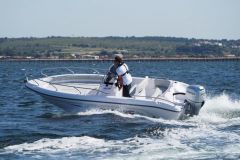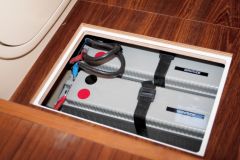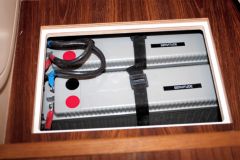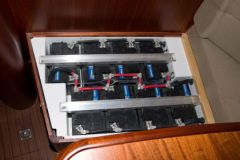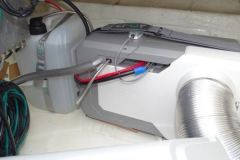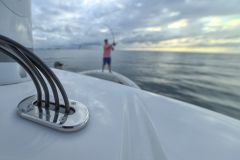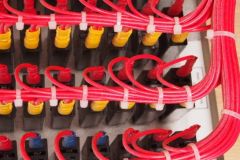Test shows weaknesses in electrical installation
Georges and Janine board this pretty ketch, which they've come to try out with a view to buying it. The owner suggests they go out with the engine, pushing it a little to make sure it doesn't lack power. All went well, and the engine proved its worth. Janine nevertheless opens the machine's panel to check that there are no leaks, that the motor is securely fastened to its silent blocks, and that the propeller shaft turns smoothly without any leaks through the stuffing box. As far as the machine is concerned, everything's fine. They move on to the rigging and hoist the sails to get acquainted with this new ketch. The test went well. Back in front of the channel, they start the engine to return and ... Nothing!
Well, the starter motor idles, but not fast enough: the battery is dead! The owner is in a quandary; he turns in circles, goes to the voltmeter. It reads 9 volts. Damn, it'll never start. They'd started with the shore power connected to the boat, but now the battery's obviously dead. George tells him it's no problem: just connect it to the service battery and it's ready to go. Indeed, it reads 13.4 V, but how? This ketch is beautiful and very seaworthy, but a little old and has a basic electrical installation. There's no circuit-breaker to enable battery coupling. This is the first time the owner has had a breakdown of this type, and he'd never thought about it before, as he'd never had any problems until now. If there's no possibility of coupling the batteries, and no battery cables to parallel them, the service battery will have to be installed in place of the engine battery. Let's get started! They loosen the lugs, swap the batteries, retighten the lugs and it's ready to go!
VRROOOUUUUMMMMM
On their previous vessel, the Croque Soleil, Georges and Janine knew the electrical system inside out, and were able to manage the distribution of electricity perfectly. The battery switch had a 1, 2, coupling and off position. A remarkably efficient tool. They started on position 1, corresponding to the engine battery, and sailed on position 2. This made use of the slow-discharge service battery, and enabled the use of all navigation instruments such as depth sounder, gps or vhf ... If, at night, they ran out of service battery because the sun could no longer feed the solar panels, no problem - one hour of motoring on position 2 was enough to recharge it. There was a solution for every situation. A similar system will be installed on this ketch, which they plan to buy anyway.
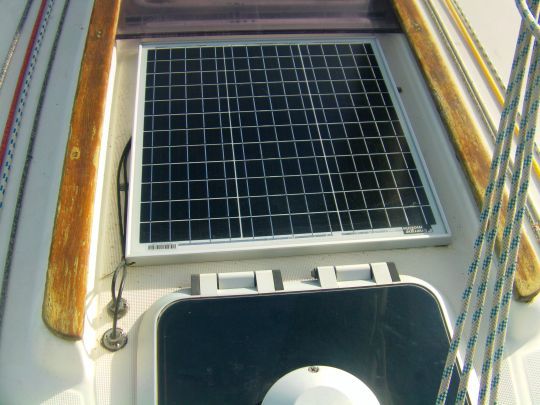
Electrical circuits: motor and service
There are two distinct electrical circuits on a boat. One circuit is dedicated to the engine and the other to the various instruments: gps, navigation lights, water pump, but also on-board comfort elements. The latter is called the service circuit. It's important to keep them separate for 2 reasons:
- the batteries must not respond to the same demand and do not have the same characteristics: the motor battery must deliver a high current when starting for a short time, while the service battery must last as long as possible with less powerful consumers.
- Separating these two circuits also means that, if one fails, the other can still function, keeping a source of electricity on board.
Are there only two electrical circuits on a boat? No, there can also be a third electrical circuit for large consumers, such as the windlass and bow thruster. But the main thing is to separate the machine from the services. Service 1 for navigation instruments and on-board living equipment. Service 2 for the windlass and bow thruster.
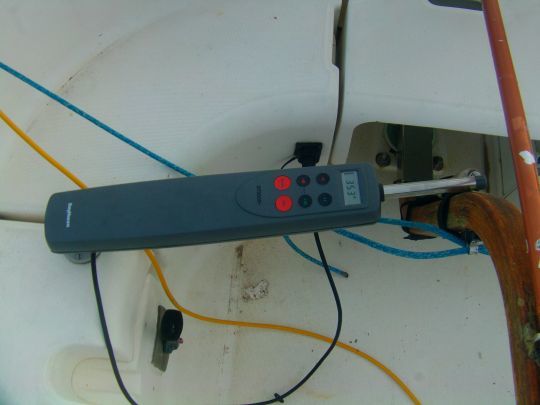
To properly size these battery packs, we first draw up an electrical balance sheet for all consumers, including comfort elements, navigation lights and electronics. We'll also look at production sources, depending on the navigation program, such as wind turbines and solar panels.
Distribution of electricity: the circuit breaker
It's important to be familiar with your electrical installation, so that you never run out of electricity on either circuit. However, it's possible for one to help the other, depending on the electrical installation strategy. The circuit-breaker is the key element, enabling electricity to be distributed according to need.
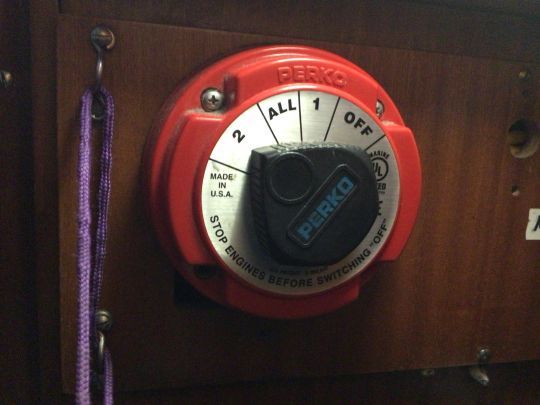
In two essential cases, the coupling mode can save you: "All" on this type of circuit breaker :
- The engine battery fails. An emergency occurs, and you need to start quickly. The coupling position allows you to start the engine with the help of the service position.
- When you're sailing, the electricity generation system you've chosen may no longer allow you to keep the navigation instruments you need functional, especially at night with solar panels, or in case of a squall with a wind turbine. Starting the engine on the coupling position will recharge the service position thanks to the alternator, and you'll be able to enjoy all the instruments you need.
In conclusion, even if all boats are unique and their electrical installation varies according to the owner's choice, it is advisable to separate the two circuits: engine and service. Likewise, it's important to have a battery isolator that allows batteries to be coupled in case of emergency. If you have any doubts about your boat's electrical installation, don't hesitate to carry out a study of the circuits and equipment consumption, so as to adapt it as closely as possible to your sailing program and never run out of power.

 /
/ 